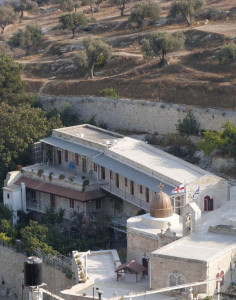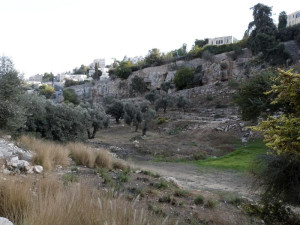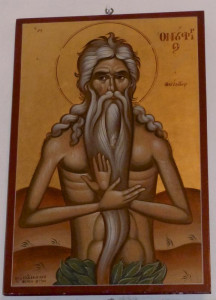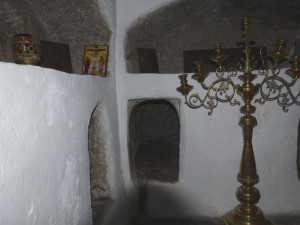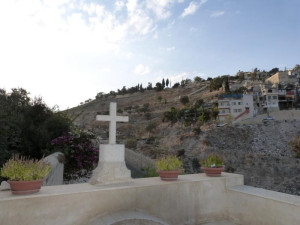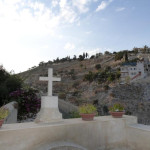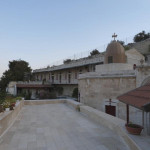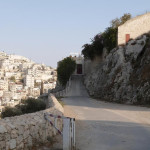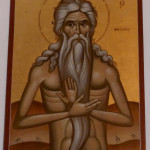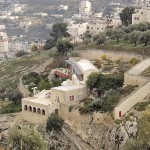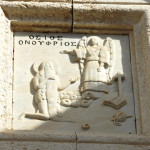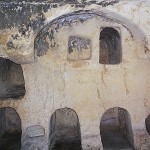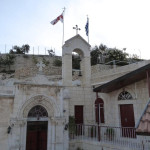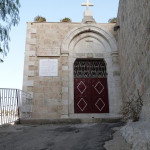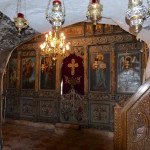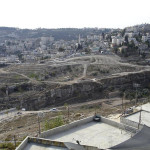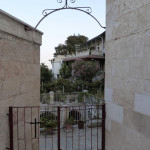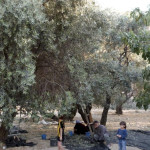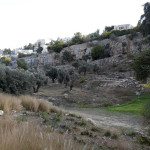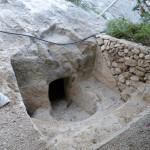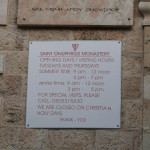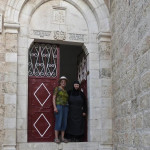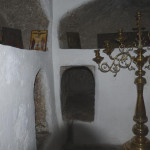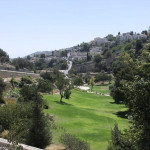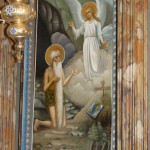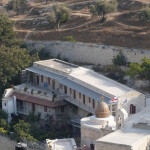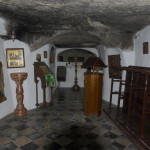Jerusalem
Akeldama, where Judas Iscariot died, is in Jerusalem’s Hinnom Valley — a picturesque setting whose infamous history of child sacrifices caused it to be identified with the hell of unquenchable fire and punishment.
The Greek Orthodox Monastery of St Onuphrius now stands on the place where Judas is believed to have hanged himself. The monastery occupies a narrow terrace on the southern face of the valley, facing Mount Zion and the Old City walls.
Akeldama (also spelt Aceldama, Hekeldama and Hakeldama) comes from Aramaic words meaning Field of Blood.
The Gospel of Matthew says Judas was filled with remorse after betraying Jesus with a kiss at Gethsemane. He then took his payment of 30 pieces of silver back to the chief priests and elders, and threw the money down in the Temple.
“The chief priests picked up the coins and said, ‘It is against the law to put this into the treasury, since it is blood money’. So they decided to use the money to buy the potter’s field as a burial place for foreigners. That is why it has been called the Field of Blood to this day.” (27:6-8)
Monastery stands among burial caves
The Monastery of St Onuphrius, built in 1874 over the remains of an earlier church building, is occupied by a small community of Greek Orthodox nuns.
It is dedicated to a saintly monk from the 3rd or 4th century. Onuphrius was famous for his luxuriant beard, which was his only garment apart from a loincloth of leaves.
The hillside on which the monastery stands is honeycombed with burial caves and tombs — some of them holding the bones of pilgrims of past centuries who came to Jerusalem but did not survive to make the journey home.
In the Byzantine period, many of these caves were occupied by monks and hermits.
The monastery chapel is in a former burial cave, with holes in the walls where bodies were laid. A 16th-century tradition says eight of the apostles hid here after Jesus was captured at Gethsemane.
Crusaders built charnel house
Near the Monastery of St Onuphrius are the remains of an underground charnel house built by the Crusaders in the 12th century, to bury the 50 or more patients who died each day in the hospital run by the Knights of St John near the Church of the Holy Sepulchre.
Loads of soil from this place were often taken to consecrate Christian cemeteries in Europe.
One of the tombs found near the monastery is believed to be that of Annas, head of the high priestly family that included Caiaphas, who presided at the trial of Jesus.
On the same side of the Hinnom Valley, archaeologists excavating a tomb in 1979 found two tiny silver scrolls from around 600 BC, inscribed with portions of the priestly blessing from the Book of Numbers: “The Lord bless you and keep you; the Lord make his face to shine upon you, and be gracious to you; the Lord lift up his countenance upon you, and give you peace.” (6:24-26)
These inscriptions are the earliest known citations of texts found in the Hebrew Bible.
Place of child sacrifice
During the First Temple period the Hinnom Valley became notorious as the place where apostate Jews sacrificed their children through fire to the pagan god Moloch.
Because of these atrocities, the valley’s name (Gei-Hinnom in Hebrew, Gehenna in Greek) became a byword for hell, the place of eternal punishment by fire, in both Jewish and Christian traditions.
In the Gospels, Jesus uses the Greek word Gehenna 11 times to describe the hell of unquenchable fire which can destroy “both body and soul” (Matthew 10:28).
However, a Middle Ages belief that the Hinnom Valley continued to belch smoke and fire because it was a perpetually burning rubbish dump has no basis in fact.
In modern times the Hinnom Valley has become a green and pleasant venue for picnics, rock climbing and concerts.
In Scripture:
Child sacrifice in the Hinnom Valley: 2 Chronicles 33:6
Child sacrifice condemned by God: Jeremiah 7:30-32
Jesus refers to the unquenchable fire of Gehenna: Mark 9:43
The purchase of the Field of Blood: Matthew 27:3-10
Monastery of St Onuphrius
Administered by: Greek Orthodox Patriarchate of Jerusalem
Tel.: Monastery, +972-505-315530; Patriarchate, +972-262-85636
Open: Apr-Sep, Tuesdays and Thursdays 9am-12 noon, 4-7pm
Oct-Mar, Tuesdays and Thursdays 9am-12 noon, 3-5pm
- View from terrace in Monastery of St Onuphrius (Seetheholyland.net)
- Monastery of St Onuphrius (Seetheholyland.net)
- Road to Monastery of St Onuphrius (Seetheholyland.net)
- Icon of St Onuphrius in Monastery of St Onuphrius (Seetheholyland.net)
- Monastery of St Onuphrius in Hinnom Valley (Bounty24)
- Stone carving of St Onuphrius and angel, above entrance to Monastery of St Onuphrius (Sir Kiss)
- Burial caves at Akeldama (Bounty24)
- Bell tower at Monastery of St Onuphrius (Seetheholyland.net)
- Entrance to Monastery of St Onuphrius (Seetheholyland.net)
- Iconostasis in Monastery of St Onuphrius (Seetheholyland.net)
- View across Hinnom Valley from southern slope of Mount Zion (Joe Freeman)
- Gardens in Monastery of St Onuphrius (Seetheholyland.net)
- Family gathering olives in Hinnom Valley (Seetheholyland.net)
- Olive trees in Hinnom Valley (Seetheholyland.net)
- Burial cave in Monastery of St Onuphrius (Seetheholyland.net)
- Notice at Monastery of St Onuphrius (Seetheholyland.net)
- Nun and visitor at Monastery of St Onuphrius (Seetheholyland.net)
- Burial niches in Monastery of St Onuphrius (Seetheholyland.net)
- Hinnon Valley (Dror Feitelson / Pikiwiki Israel)
- Painting of St Onuphrius in Monastery of St Onuphrius (Seetheholyland.net)
- Monastery of St Onuphrius (Seetheholyland.net)
- Former burial cave in Monastery of St Onuphrius (Seetheholyland.net)
References
Hilliard, Alison, and Bailey, Betty Jane: Living Stones Pilgrimage: With the Christians of the Holy Land (Cassell, 1999)
Mackowski, Richard M.: Jerusalem: City of Jesus (William B. Eerdmans, 1980)
Murphy-O’Connor, Jerome: The Holy Land: An Oxford Archaeological Guide from Earliest Times to 1700 (Oxford University Press, 2005)
Prag, Kay: Jerusalem: Blue Guide (A. & C. Black, 1989)
Ritmeyer, Leen and Kathleen: “Potter’s Field or High Priest’s Tomb” (Biblical Archaeology Review, November/December 1994)

